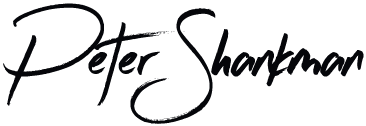Have you joined my incredibly non-annoying, once-in-a-while email newsletter?
One line takeaway: Productivity is available to you 24 hours a day. Don’t stifle it by not having the right tools at any given moment in time.
Additionally, with the exception of being on the advisory board of the ScotteVest, I have no financial relationship with any of the products I mention below.
Over the past 60 days, I’ve figured out how to increase my productivity by over 25% with a smart series of moves that I’ll share below.
Before I go into it, I should thank Adam Boettiger. He’s like a time-saving savant, offering me several of the tips below, and I want to publicly say thank you. I recommend following him if you’re looking for good tidbits on marketing, advertising, and tech. You’re a good guy, Adam. A bit rainman-ish in your focus, but a good guy nonetheless.
So what have I done? Several things have combined to increase my productivity, including the devices I carry, the software I use, how I manage my time (whether I’m asleep or awake) and even the clothes that I wear. I’ll try to break them all down.
Essentially, Hardware, Software, and Transportation of the two.
Let’s start with the hardware:
About two months ago, I ordered the Macbook Air. I’m currently typing this blog post on it. If I’m writing, chances are, I’m writing on the Air. It is truly revolutionary – Not only because of its weight (or lack of it, I should say,) but also because of the pure speed. As I’ll get into later, most of the writing I do, whether for both of my blogs, or for my third book, or for the HARO, takes place when I’m in transit. Either on a plane, in an airport lounge, or lately, more and more on subways and in cabs. Because I’m writing as much as I am on subways, (average trip, 14 minutes) every second counts. If there’s a free seat on the train and I take it, the laptop is out within five seconds, and booted up within fifteen. That’s 13 minutes and 45 seconds of pure writing time. It’s not waiting for something to boot up, or a program to open. (I leave two writing programs open at all times – at the most, it’s a half-a-second to type Open-Apple-N to open a new document, and boom, I’m writing.
The specs on my Air are simple: 13.3 inch screen, 4GM Ram, 250GB Hard Drive. That’s plenty big for me for several reasons, primarily because of the software I’m using below. I can store several TV seasons thru iTunes on it without breaking a sweat, as well as a few movies if I want. My logic is this: Can I store enough to work/relax/be entertained if I found myself without Internet access for 48 hours? If so, then I’m good. If I find myself without Internet access for more than 48 hours, guys, I’ve probably got much bigger problems to which I should attend.
I don’t care which computer you’re using to make yourself more productive, the point is that if it doesn’t work for you when you need and it how you need it, it’s taking away from your productivity.
Additional hardware: My Blackberry World Phone, service by Verizon. I’m not going to get into VZ’s customer service. They’re a mobile phone company. Like every other mobile phone company, their customer service sucks. That’s to be expected. That doesn’t impact my productivity though, unless my phone goes down or dies. And if that happens, it’s a question of going in and buying a new phone. Chances are, by that time, there’s a newer model to which I can upgrade.
Finally, I have a Sprint 4G Overdrive card with me at all times. The battery life isn’t great, but it’s acting as a hotspot, so you wouldn’t expect it to be. I carry it for a number of reasons – You never know when creativity is going to strike, and it might strike when you’re not in range of a WiFi network. Plus, if you’ve read my rant on why it’s time to get rid of free WiFi, part two, you’ll know why I prefer my Overdrive to some random hotspot. Lastly, when you get a good 4G signal, the card is blazingly fast.
Next up: The software
Studies have shown that as computer users, we tend to stick with four or five programs on a regular basis, and if someone came in and deleted 80% of our other software, it’d be over a month before we noticed. To me, that means one thing: I need to simplify how I use my Mac.
For starters, I know that I have this Mac, plus my Macbook Pro at home, plus an iPad, plus my Blackberry. Nothing was syncing, and that was getting annoying. I had to figure out a better way to Sync everything up at once.
Enter Google Apps, Dropbox, Evernote, Jing, and Backblaze.
Simple enough programs, all of which allow me to live in the cloud. Living in the cloud, for me, anyway, means that I’m never at a loss for a document. BTW – living in the cloud isn’t anything new. You know that thing called The Internet? THAT’S THE DAMN CLOUD. Stop referring to the cloud like it was invented in October of 2010.
Anyhow: I know which computer everything is on, because they’re all synchronous. I save one thing in one place, it lives up-to-date on whatever device I happen to open at whatever time I happen to open it. Always the latest version, always ready for editing. So when I find myself with a ten minute train ride, or waiting for a doctor, or anything, I can open and work.
It all falls under my belief in the concept of OneScreen.
If you do decide to live in the cloud, have a good password on all your devices so if you lose one, all your stuff isn’t visible by whomever finds your it.
Additionally, I make a list of passwords, itself password protected. If I lose my laptop, I can login, get the list, and go down the list changing everything.
By switching my mail and calendars over to Google Apps ($50 a year per user,) I can make sure my calendar is always sync’d with all my devices – my Blackberry, etc. Furthermore, my assistant Meagan has control of my calendar from her laptop as well, allowing her to add things to it that automatically sync with my Blackberry when I’m on the road. Additionally, when I call her up and say “where the hell is my meeting, I’m at 247 Evergreen Terrace, she can look online and say “you’re reading it backwards, you want 742 Evergreen Terrace.” Then I can hang up sheepishly and go to my meeting.
Dropbox is simply that – a place to save everything. Spectacular user interface, it’s like an additional drive on your computer. It lives in the cloud, so all my files live there, too. I’m never wondering if I didn’t load up the presentation, or can’t find the latest video of the NASA launch, or whatever – Anything I put there, lives there, and can either be downloaded, or viewed on any device or I have. Eastern European child pickpockets steal my laptop an hour before my speech? No worries, I find a web browser and grab a copy. Good place to keep an extra copy of your passport picture page, as well.
Evernote allows me to copy, write down, photograph, or audiotape any ideas that come to mind, which I can later turn into content – blog posts or the like. Again, works on my Blackberry, iPad, laptop, etc. See something interesting? Snap a photo to Evernote. Have a brilliant blog idea? Save it to Evernote. It does a ton more, too, but those are the main uses for me.
Jing is a brilliant piece of software that lets me capture whatever’s on my screen – be it a screenshot or video.
Backblaze constantly backs up all my computers to the cloud, whenever I’m connected. Piece of mind.
Here’s the thing: This is what works for ME. Your mileage may vary, and of course, I want to hear about it below.
One final note on the above – With the exception of Google Apps, all the other pieces of software have “free” or “light” versions. I don’t recommend them. Pay for the full. It’s worth it. You’ll get upgrades as they happen, you’ll get the best they have to offer. It’s so cheap ($20 or $30,) it’s worth it for the productivity boost.
In terms of any other software I use, I tend to stick with the software that keeps anything it needs on their servers. Trillian, for instance, or Google Talk. Skype does the same.
Here’s what it comes down to for software: I’m using software in such a way that every screen on which I work is 99% the same for me. THAT’S the productivity win for me. If I can sit down and in a few seconds start typing as usual, I’m more productive.
Finally, make sure the hardware and software are always with you:
The ScotteVest No Baggage Challenge taught me this – I love my Ogio backback, but I carried way too much stuff in it, and as such, didn’t take it with me except when I was traveling. I didn’t take it downtown, or when I had meetings, and I lost productivity time.
I still love my Ogio products, but for travel. For day-to-day use, it’s all about carrying as little as possible to make sure you actually bring it with you all the time. The lightest laptop in the world won’t help you on the subway if it’s sitting in your apartment. Check out the video below. That’s what allows me to have the tools with me at all time to stay productive.
FULL DISCLOSURE: I sit on the advisory board of the ScotteVest. I make no money from them, I never have, and they don’t know that I’m doing this video. In exchange for my advice, I get free clothing from them. That’s it.
In the end, I think productivity comes down to three things:
1) Hardware2) Software3) Gear you have to enable you to always be utilizing 1 and 2.
Leave me your top tip for productivity below. The best tip gets an XShot iPhone 4 case. If you don’t have an iPhone 4, I’ll find something else for you.



